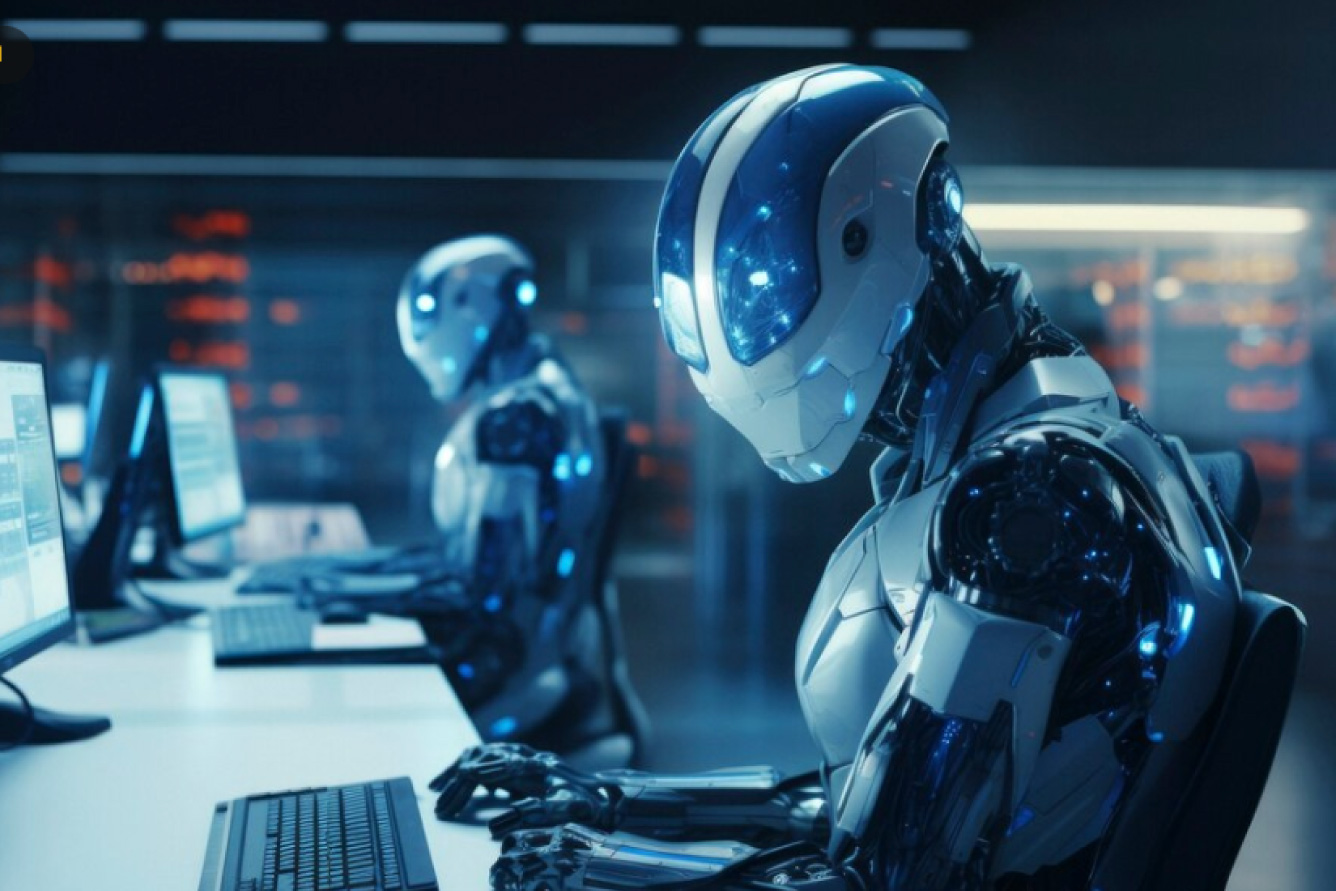Subtotal $0.00
As the tapestry of our global work environment becomes interwoven with artificial intelligence (AI), the fabric of our workforce inevitably transforms. AI, a concept that once reverberated with the uncanny essence of futuristic science fiction, now undeniably influences present-day employment landscapes. Through this confluence of technology and labour, we unearth a complex narrative of both profound opportunities and intricate challenges that beckon us to adapt.
Opportunities
- Augmentation of Human Workforce
AI’s most potent opportunity within employment lies in its ability to augment human capabilities. This synergistic relationship empowers workers to transcend their inherent limitations, enabling them to tackle tasks more efficiently and creatively. The integration of AI in analytical roles, for instance, equips professionals with data-driven insights that facilitate informed decision-making, enhancing productivity and service quality. - Creation of New Job Categories
Through the transformative echo of AI across industries, new career categories are emerging. These domains demand a workforce skilled in navigating the AI terrain—roles such as AI specialists, data scientists, and ethics compliance managers. In essence, as AI redefines our existing occupations, it simultaneously cultivates fertile ground for novel forms of employment to flourish. - Economic Growth
AI holds the substantial potential to stimulate economic expansion. By creating new products and services, streamlining operations, and engendering market efficiencies, AI could propel growth across varied sectors. Furthermore, as AI embeds itself within industries, it could serve as a catalyst for job creation and stimulate a cycle of economic vibrancy and employment diversity.
Challenges
- Displacement of Traditional Jobs
One of the most palpable challenges that AI presents is the potential displacement of jobs, predominantly those involving routine or repetitive tasks. As intelligent systems demonstrate capability and efficiency, some roles face the risk of obsolescence. Occupations in manufacturing, customer service, and even aspects of white-collar professions could undergo significant transformations or even extinction. - Skill Gaps and Retraining
The seismic shift toward an AI-driven economy necessitates a corresponding evolution in the skill sets required by the workforce. This transition represents an educational and vocational challenge—retraining and upskilling programs become critical to ensure that employees can thrive alongside AI counterparts. Governments, educational institutions, and corporations must collaborate to address and bridge these emerging skill gaps. - Ethical and Societal Considerations
AI’s ascendancy introduces complex ethical questions surrounding privacy, bias, and the intrinsic value of human labour. An AI-centred employment ecosystem must meticulously consider these dimensions to foster equitable and respectful AI applications. Additionally, the societal implications of job reallocation and the possible widening of inequality gaps cannot be overlooked.
Conclusion
The integration of AI into the workforce paints a dynamic interplay of opportunities and challenges. While AI heralds unprecedented spectral of career potential and economic progress, it also mandates astute anticipation and mitigation of the risks associated with job displacement, skill requirements, and ethical quandaries.
To navigate these transformative currents, a concerted and proactive approach is required—one that transcends industries and borders. Policymakers, educators, businesses, and workers alike must collaborate to mould an AI-integrated employment paradigm that not only maximises the potential benefits but does so whilst conscientiously safeguarding our societal values and workforce inclusivity.
As we march towards this AI-enriched future, our collective responsibility is to ensure that the dawn of AI within employment signals not the dusk of human relevance, but rather the rise of a harmonised, innovative, and inclusive professional world.

